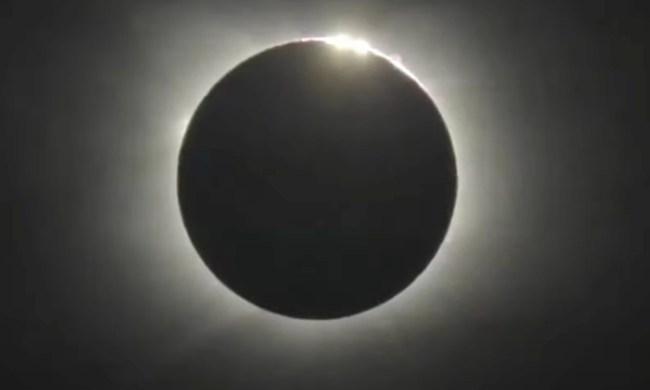As it continues its painstaking search for microbial life on Mars, NASA’s Perseverance rover has also been reporting otherworldly happenings occurring during its adventures.
Just recently, for example, one of its many onboard cameras captured some remarkable footage of a solar eclipse as Phobos — one of Mars’ two moons — passed between the red planet and the sun.
“Ever feel like someone’s watching you?” Perseverance said in a post on social media that included the video of Phobos. “That’s how I felt when I observed this transit of the martian moon Phobos! The pupil in this ‘googly eye’ is the potato-shaped moon, and the iris is our sun.”
Ever feel like someone's watching you?
That's how I felt when I observed this transit of the Martian moon Phobos! The pupil in this "googly eye" is the potato-shaped moon, and the iris is our Sun. Learn more: https://t.co/jUYoXY1jpK pic.twitter.com/7izVWOHEPH
— NASA's Perseverance Mars Rover (@NASAPersevere) October 30, 2024
“Captured by the rover’s Mastcam-Z on September 30, the 1,285th martian day of Perseverance’s mission, the event took place when the potato-shaped moon passed directly between the sun and a point on the surface of Mars, obscuring a large part of the sun’s disc,” NASA’s JET Propulsion Laboratory, which is overseeing the rover mission, said in a post on its website. “At the same time that Phobos appeared as a large black disc rapidly moving across the face of the sun, its shadow, or antumbra, moved across the planet’s surface.”
Named after the god of fear and panic in Greek mythology by astronomer Asaph Hall in 1877, Phobos is about 157 times smaller in diameter than Earth’s moon, and is only about 17 miles (27 kilometers) at its widest point, compared to the 2,159.2 miles (3,475 kilometers) of Earth’s moon.
NASA’s Mars rovers have been capturing footage of Phobos since 2004, providing scientists with plenty of data to learn more about it. For example, it’s been found that Phobos’ orbit is almost perfectly in line with Mars’ equator and relatively close to the planet’s surface, causing a fast orbit in which it loops around Mars in a mere 7.6 hours. Phobos is moving closer to Mars by about six feet every 100 years, a descent that suggests it will collide with the planet — or break up due to gravitational stresses — in about 50 million years’ time.


